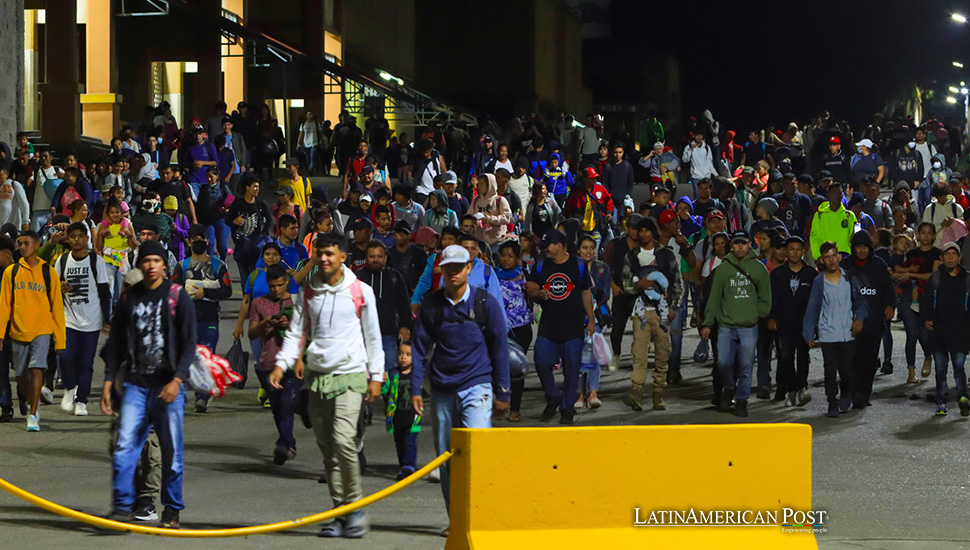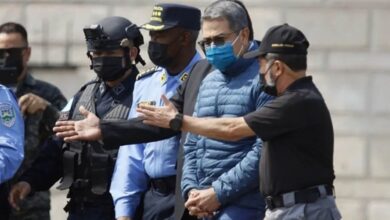Amid Hope and Desperation, Honduran Migrant Caravan Starts Arduous Journey North

A new wave of 500 Honduran migrants sets out from San Pedro Sula, embarking on a perilous journey fueled by hope and desperation, reviving memories of the mass migrations of recent years.
A Hopeful Gathering in San Pedro Sula
In the pre-dawn hours of a crisp morning in San Pedro Sula, 500 Honduran migrants, including men, women, and children, gathered with a singular, shared purpose: to reach the United States. This caravan, the first since January 2022, represents not just a journey but the embodiment of hope and desperation for many who have faced job loss and economic hardship, particularly in the agricultural sector.
The departure of this group marks a significant moment in the ongoing narrative of migration in Central America. Previously, most migrants traveled in smaller groups, relying on various modes of transportation and often navigating the perils of smuggling networks. The formation of such a large caravan is a departure from recent trends and harks back to the massive migrations of 2018 and 2019.
San Pedro Sula’s Resilient History with Migration
San Pedro Sula, a city with a history intertwined with migration, has once again become the starting point for a journey fraught with uncertainty and danger. In the past, the city’s bus terminal has been a hub for daily departures of hopeful individuals and families. It was also the origin of the significant caravans that captured global attention several years ago when many reached as far as the southern U.S. border.
However, the landscape of migration changed dramatically after the pandemic. The U.S., seeking to curb the flow of undocumented migrants, exerted pressure on Mexico and Central American governments. This led to increased efforts to halt the progress of these caravans, often resulting in their disbandment in southern Mexico or within Guatemalan territory.
A Fresh Start Amidst Political Changes
This new caravan emerges in a context markedly different from the heady days of large-scale migrations. It follows an attempt in early 2022, just before Honduran President Xiomara Castro’s inauguration, when a group of 600 migrants also left San Pedro Sula, only to be disbanded by Guatemalan security forces.
The journey of these 500 souls is set against the backdrop of a hemisphere experiencing record numbers of migrants. The end of 2023 saw a surge in illegal crossings into the U.S. from Mexico, with U.S. authorities recording up to 10,000 crossings over several days in December. However, this number experienced a significant decrease in early January.
The plight of these migrants is a complex tapestry of socio-economic factors. For many, the loss of jobs due to the closure of plantations in inland and southern Honduras has left them with little choice but to seek opportunities elsewhere. The decision to escape one’s homeland is never taken lightly, and for these individuals, it represents a leap of faith into the unknown, driven by the pursuit of a better life.
A Diplomatic Maze and Political Challenges
The caravan’s journey is not just a physical trek across countries and borders but a journey through a maze of political and diplomatic challenges. The response of the U.S. and other countries in the region to this latest caravan will be closely watched, as it may set the tone for future migration policies and handling similar situations.
As this group of Hondurans embarks on their journey, they carry with them their belongings and the collective hopes and dreams of their communities. Their journey is a stark reminder of the region’s ongoing humanitarian challenges and the need for comprehensive and compassionate solutions to migration.
Also read: Panama Bolsters Colombia Border Control Amid Unprecedented Migrant Influx
The story of these migrants is one of resilience and courage in the face of adversity. It is a narrative that transcends borders and speaks to the universal human desire for security, opportunity, and a better future. As they move forward, their journey will undoubtedly add a new chapter to the complex and evolving story of migration in the Americas.





